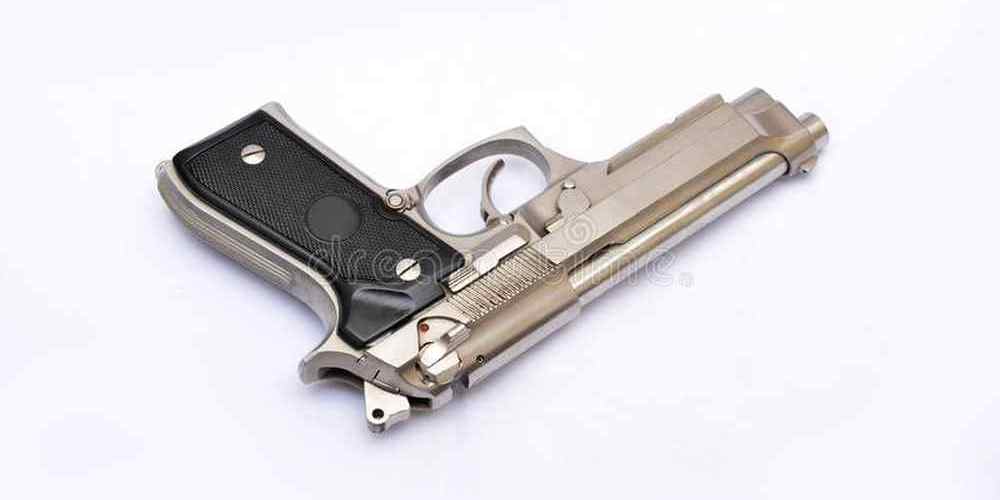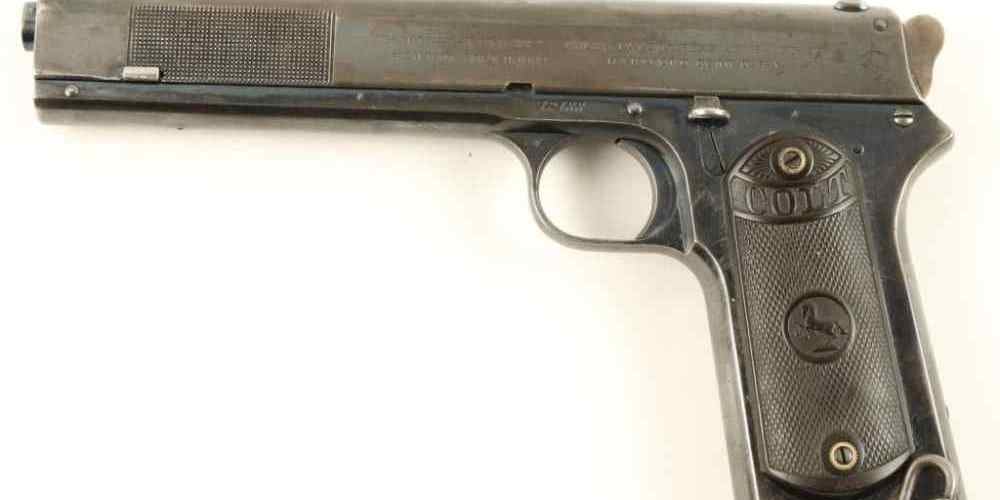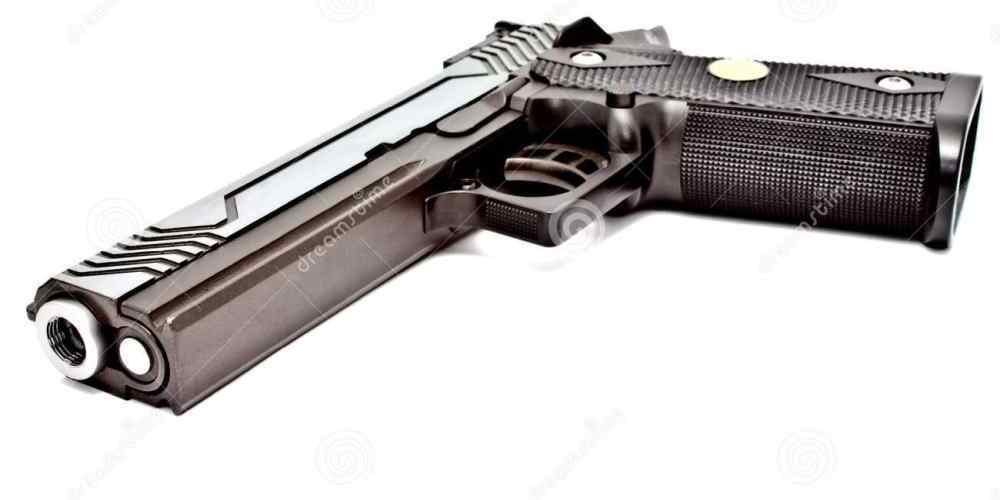“Enhancing comfort and control for a seamless shooting experience.”
Grip Angle and Texture
When it comes to semi-automatic pistols, one of the most important aspects of the design is the grip. The grip angle and texture play a crucial role in how comfortable and effective a pistol is for the user. In this article, we will explore the importance of grip angle and texture in semi-auto pistol ergonomics.
The grip angle of a pistol refers to the angle at which the grip is designed to fit the natural position of the shooter’s hand. A proper grip angle can make a significant difference in how comfortable and accurate a shooter is with their pistol. Most semi-auto pistols are designed with a grip angle that is similar to the angle of the human hand when it is in a natural, relaxed position. This allows for a more natural and comfortable grip, which can help improve accuracy and reduce fatigue during extended shooting sessions.
In addition to grip angle, the texture of the grip is also an important factor in how well a pistol handles. The texture of the grip refers to the surface of the grip that comes into contact with the shooter’s hand. A textured grip can provide better traction and control, especially in wet or slippery conditions. Many semi-auto pistols come with textured grips that are designed to provide a secure and comfortable hold for the shooter.
When it comes to grip angle and texture, personal preference plays a significant role in determining what works best for each individual shooter. Some shooters may prefer a more aggressive texture on their grip for better control, while others may prefer a smoother texture for a more comfortable feel. Similarly, some shooters may prefer a grip angle that is more vertical, while others may prefer a grip angle that is more angled.
One of the key benefits of having a customizable grip on a semi-auto pistol is that it allows the shooter to adjust the grip angle and texture to their liking. Many semi-auto pistols come with interchangeable grip panels that allow the shooter to customize the grip to fit their hand size and shape. This can help improve comfort and control, as well as enhance the overall shooting experience.
In conclusion, grip angle and texture are important factors in semi-auto pistol ergonomics. A proper grip angle can help improve comfort and accuracy, while a textured grip can provide better traction and control. Personal preference plays a significant role in determining what works best for each individual shooter, and having a customizable grip can help tailor the pistol to fit the shooter’s needs. By paying attention to grip angle and texture, shooters can ensure that they have a pistol that is comfortable, effective, and enjoyable to shoot.
Trigger Reach and Shape
When it comes to semi-automatic pistols, one of the most important aspects of the design is the ergonomics. Ergonomics refers to the study of how people interact with products and environments in a way that is safe, comfortable, and efficient. In the case of semi-auto pistols, ergonomics play a crucial role in how well a shooter can handle and operate the firearm.
One key aspect of pistol ergonomics is trigger reach and shape. The trigger is the part of the pistol that the shooter pulls to fire the gun, so it is essential that it is positioned in a way that allows for easy access and comfortable use. Trigger reach refers to the distance between the backstrap of the pistol grip and the face of the trigger. If the trigger reach is too long, it can be difficult for shooters with smaller hands to reach the trigger comfortably. On the other hand, if the trigger reach is too short, shooters with larger hands may have trouble finding a comfortable grip on the pistol.

To address this issue, many pistol manufacturers offer different grip sizes or backstraps that can be swapped out to adjust the trigger reach to better fit the shooter’s hand size. This customization option allows shooters to find the perfect fit for their hands, ensuring that they can comfortably and safely operate the pistol.
In addition to trigger reach, the shape of the trigger itself also plays a role in ergonomics. The shape of the trigger can affect how comfortable it is to pull and how easy it is to control the trigger pull. Some shooters may prefer a flat-faced trigger, while others may prefer a curved trigger. Ultimately, the best trigger shape is a matter of personal preference, but it is important to choose a trigger shape that allows for a smooth and consistent trigger pull.
Another factor to consider when it comes to trigger ergonomics is the weight and length of the trigger pull. A heavy trigger pull can make it difficult to shoot accurately, while a light trigger pull can increase the risk of accidental discharges. Finding the right balance between trigger weight and length is crucial for ensuring that the pistol is both safe and easy to use.
Overall, trigger reach and shape are important considerations when it comes to semi-auto pistol ergonomics. By choosing a pistol with a trigger reach and shape that fits your hand size and preferences, you can ensure that you have a comfortable and safe shooting experience. So next time you’re in the market for a new pistol, be sure to pay attention to the trigger ergonomics to find the perfect fit for you.
Slide Manipulation and Serrations
When it comes to semi-automatic pistols, one of the key aspects of design that greatly impacts user interaction is the slide manipulation and serrations. These features play a crucial role in how easily and comfortably a shooter can operate the firearm, especially when it comes to loading and unloading the weapon, as well as clearing malfunctions.
Slide manipulation refers to the process of pulling back the slide to chamber a round or eject a spent casing. This action requires a certain amount of force, depending on the design of the pistol and the strength of the shooter. The ergonomics of the slide play a significant role in how easy or difficult it is to manipulate.
One of the key factors in slide manipulation is the presence of serrations on the slide. Serrations are small grooves or ridges that are machined into the slide to provide a textured surface for the shooter to grip onto. These serrations help improve the shooter’s grip on the slide, making it easier to pull back and release.
The design and placement of the serrations are crucial in determining how effective they are in aiding slide manipulation. Serrations that are too shallow or too deep may not provide enough grip for the shooter, while serrations that are too close together or too far apart may not be as comfortable to use.
In addition to the design of the serrations, the material used in their construction also plays a role in their effectiveness. Serrations made from a durable material like steel are more likely to provide a reliable grip over time, while serrations made from a softer material may wear down quickly and become less effective.
Another important aspect of slide manipulation is the size and shape of the slide itself. A slide that is too small or too large may be difficult for some shooters to manipulate comfortably. The shape of the slide can also impact how easy it is to grip and manipulate, with some designs featuring angled or curved surfaces that may be more or less ergonomic for different shooters.
Overall, the design of the slide and serrations on a semi-automatic pistol greatly impact the user’s ability to manipulate the firearm effectively. A well-designed slide with properly placed and constructed serrations can make the process of loading, unloading, and clearing malfunctions much easier and more comfortable for the shooter.
In conclusion, slide manipulation and serrations are crucial aspects of semi-automatic pistol ergonomics that greatly impact user interaction with the firearm. The design, placement, and material of the serrations, as well as the size and shape of the slide, all play a role in how easy and comfortable it is for a shooter to manipulate the slide. By paying attention to these details in the design process, manufacturers can create pistols that are more user-friendly and enjoyable to shoot.
Magazine Release Location and Size
When it comes to semi-automatic pistols, one of the key factors that can greatly impact the user experience is the design and location of the magazine release. The magazine release is a critical component of any semi-auto pistol, as it allows the user to quickly and easily remove the magazine for reloading. In this article, we will explore the importance of magazine release location and size in semi-auto pistol ergonomics.
The location of the magazine release on a semi-auto pistol can greatly affect how easily and quickly a user can access and activate it. Ideally, the magazine release should be located in a position that allows for easy access with the shooting hand without requiring the user to significantly adjust their grip on the pistol. This ensures that the user can quickly and efficiently reload the pistol without fumbling or wasting precious time.
In terms of size, the magazine release should be large enough to be easily activated, even under stressful or high-pressure situations. A small or recessed magazine release can be difficult to locate and activate quickly, which can be a significant disadvantage in a self-defense or combat scenario. A larger, more prominent magazine release allows for quick and easy activation, even when the user is under stress.
Some semi-auto pistols feature ambidextrous magazine releases, which can be activated with either hand. This can be a valuable feature for left-handed shooters or for users who may need to switch hands during shooting. Ambidextrous magazine releases can greatly enhance the overall usability and versatility of a semi-auto pistol, making it easier for a wider range of users to operate the firearm effectively.
In addition to location and size, the design of the magazine release itself can also impact the user experience. Some semi-auto pistols feature a button-style magazine release, which requires the user to press a button to release the magazine. Other pistols may feature a lever-style magazine release, which can be activated by pushing or pulling a lever in a specific direction.
The type of magazine release that is best for a particular user will depend on personal preference and shooting style. Some users may prefer the tactile feedback of a button-style release, while others may find a lever-style release to be more intuitive and easy to use. Ultimately, the best magazine release design is one that allows the user to quickly and efficiently reload the pistol without sacrificing their grip or shooting stance.
In conclusion, the design and location of the magazine release on a semi-auto pistol play a crucial role in the overall ergonomics and user interaction of the firearm. A well-designed magazine release that is located in an easily accessible position and is of an appropriate size can greatly enhance the user experience and make reloading the pistol a quick and efficient process. Whether you prefer a button-style or lever-style release, it is important to choose a semi-auto pistol with a magazine release that suits your personal preferences and shooting style. By paying attention to the details of magazine release design and location, you can ensure that your semi-auto pistol is comfortable, easy to use, and reliable in any shooting situation.
Overall Weight and Balance
When it comes to semi-automatic pistols, one of the key factors that can greatly impact the user’s experience is the overall weight and balance of the firearm. The design and ergonomics of a pistol play a crucial role in how comfortable and effective it is to handle and shoot. In this article, we will explore the importance of weight and balance in semi-auto pistol design and how it can affect the user’s interaction with the firearm.
The weight of a pistol can have a significant impact on how easy it is to handle and shoot. A pistol that is too heavy can be difficult to hold steady, especially for extended periods of time. On the other hand, a pistol that is too light may have excessive recoil, making it harder to control and shoot accurately. Finding the right balance between weight and recoil is essential for creating a pistol that is comfortable and effective to use.
One of the key factors that can affect the weight and balance of a pistol is the materials used in its construction. For example, pistols made from lightweight materials such as polymer or aluminum are generally easier to handle and carry than those made from heavier materials like steel. However, heavier materials can help to reduce recoil and improve stability when shooting. Finding the right balance between weight and material is crucial for creating a pistol that is both comfortable and effective to use.
Another factor that can affect the weight and balance of a pistol is the design of its grip. A pistol with a grip that is too large or too small for the user’s hand can be uncomfortable to hold and difficult to control. A well-designed grip should fit comfortably in the user’s hand, providing a secure and stable hold on the firearm. Additionally, the texture and shape of the grip can also impact how easy it is to handle and shoot the pistol. Grips with aggressive texturing can help to improve control and reduce slippage, especially in wet or sweaty conditions.
The distribution of weight in a pistol can also have a significant impact on its balance and handling. A pistol that is front-heavy may be more difficult to control and aim accurately, while a pistol that is rear-heavy may be harder to hold steady. Finding the right balance between weight distribution and overall weight is essential for creating a pistol that is comfortable and effective to use. Manufacturers often design pistols with a slight bias towards the muzzle to help reduce recoil and improve stability when shooting.
In conclusion, the overall weight and balance of a semi-automatic pistol play a crucial role in how comfortable and effective it is to handle and shoot. Finding the right balance between weight, materials, grip design, and weight distribution is essential for creating a pistol that is both comfortable and effective to use. By paying attention to these factors, manufacturers can design pistols that are ergonomic, reliable, and enjoyable to shoot.





